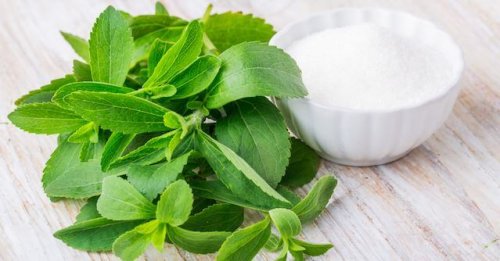What Are Diet Products?

Diet products are foods that are usually low in calories. Their production consists in substituting some commonly used ingredients, which are generally high in calories, with other ingredients instead, to help us reduce our caloric intake.
These foods, which are low in calories, can also be a great help to people who have a medical condition. It’s important to emphasize that these products provide the necessary energy, no matter your age and your physical condition, for example, they’re suitable for children, pregnant women, and adults.
Substitution of sugar
Sugar is one of the ingredients that companies substitute the most when making diet products.
Fructose is the go-to substitute, but there are many other “zero-calorie” artificial sweeteners, such as stevia and aspartame. Sodium saccharine isn’t so popular anymore due to its characteristic metallic aftertaste.

These artificial sweeteners are used in moderation and not in huge quantities, due to their harmful nature for people with phenylketonuria. Moreover, when consumed in great quantities they can cause flatulence and other digestive disorders such as diarrhea.
Although sweeteners are low in calories, they activate the production of insulin in the body and therefore, deceive our brain. So, be careful when adding them to your weight loss diet.
In fact, they’re not useful if you want to reduce your appetite. It’s actually the opposite: you could be hungrier after you eat them.
However, sweeteners can be very beneficial for people with diseases like diabetes.
Substitution of fat
Since there are many foods that have “low-fat” on the label, it can be confusing for the consumer.
So, are they really low-fat? Many foods are low-fat due to the nature of the product itself, which makes it easier for the maker to put it on the label.
These foods are very useful, not only to lose weight but also for people who want to or need to control their fat intake for health reasons. A product is considered low-fat when it has 30 percent fewer calories, that come from fat, rather than from the original version of the product.

Lots of products are higher in calories due to their content of sauces and dressings, such as margarine, mayonnaise or oil. Diet versions of these products reduce their fat contents otherwise, they couldn’t be called diet products. Skim-milk cheeses and dairy are also becoming very popular.
When eliminating fat from a product, makers must also strive to keep their product low in calories. It’s not so easy to find the ideal product that keeps the sensory properties of the ingredients, while still being low in calories.
Thus, makers use a combination of products, such as protein, fiber, and flavorings, to preserve the characteristics of the foods.
Protein is used as a substitute for fat, especially in frozen goods, and as a carbohydrate substitute, thickeners and food stabilizers are used.
It’s very important that the label states the content of fat and the number of calories coming from it.
We often make the mistake of thinking that low-fat means low in calories, when it’s certainly not always the case.
Misleading diet products
We must be especially careful when it comes to food labels because there are products with misleading and deceptive descriptions:
- There are products with the word “diet” on the label but the calories aren’t at least 30 percent lower than the original version of the product.
- Companies sell the product in smaller servings so it looks like it has fewer calories than the original version.
- Or they recommend that we eat a small amount of the product so that it doesn’t provide us with more calories than the normal product.
- Make sure that the label of diet foods has the percentage of fat reduction, but also the number of calories.
Diet products are foods that are usually low in calories. Their production consists in substituting some commonly used ingredients, which are generally high in calories, with other ingredients instead, to help us reduce our caloric intake.
These foods, which are low in calories, can also be a great help to people who have a medical condition. It’s important to emphasize that these products provide the necessary energy, no matter your age and your physical condition, for example, they’re suitable for children, pregnant women, and adults.
Substitution of sugar
Sugar is one of the ingredients that companies substitute the most when making diet products.
Fructose is the go-to substitute, but there are many other “zero-calorie” artificial sweeteners, such as stevia and aspartame. Sodium saccharine isn’t so popular anymore due to its characteristic metallic aftertaste.

These artificial sweeteners are used in moderation and not in huge quantities, due to their harmful nature for people with phenylketonuria. Moreover, when consumed in great quantities they can cause flatulence and other digestive disorders such as diarrhea.
Although sweeteners are low in calories, they activate the production of insulin in the body and therefore, deceive our brain. So, be careful when adding them to your weight loss diet.
In fact, they’re not useful if you want to reduce your appetite. It’s actually the opposite: you could be hungrier after you eat them.
However, sweeteners can be very beneficial for people with diseases like diabetes.
Substitution of fat
Since there are many foods that have “low-fat” on the label, it can be confusing for the consumer.
So, are they really low-fat? Many foods are low-fat due to the nature of the product itself, which makes it easier for the maker to put it on the label.
These foods are very useful, not only to lose weight but also for people who want to or need to control their fat intake for health reasons. A product is considered low-fat when it has 30 percent fewer calories, that come from fat, rather than from the original version of the product.

Lots of products are higher in calories due to their content of sauces and dressings, such as margarine, mayonnaise or oil. Diet versions of these products reduce their fat contents otherwise, they couldn’t be called diet products. Skim-milk cheeses and dairy are also becoming very popular.
When eliminating fat from a product, makers must also strive to keep their product low in calories. It’s not so easy to find the ideal product that keeps the sensory properties of the ingredients, while still being low in calories.
Thus, makers use a combination of products, such as protein, fiber, and flavorings, to preserve the characteristics of the foods.
Protein is used as a substitute for fat, especially in frozen goods, and as a carbohydrate substitute, thickeners and food stabilizers are used.
It’s very important that the label states the content of fat and the number of calories coming from it.
We often make the mistake of thinking that low-fat means low in calories, when it’s certainly not always the case.
Misleading diet products
We must be especially careful when it comes to food labels because there are products with misleading and deceptive descriptions:
- There are products with the word “diet” on the label but the calories aren’t at least 30 percent lower than the original version of the product.
- Companies sell the product in smaller servings so it looks like it has fewer calories than the original version.
- Or they recommend that we eat a small amount of the product so that it doesn’t provide us with more calories than the normal product.
- Make sure that the label of diet foods has the percentage of fat reduction, but also the number of calories.
This text is provided for informational purposes only and does not replace consultation with a professional. If in doubt, consult your specialist.








